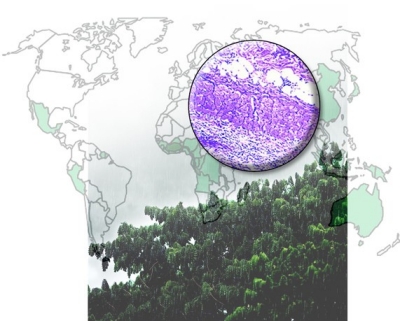Is Climate Change Spawning Infectious Diseases?

By Merry Morris
Buruli ulcer is not an affliction you would like anyone to contract. Caused by Mycobacterium ulcerans, it produces a toxin which necrotizes tissue and hampers immune response. Up to 6000 cases are reported annually to the World Health Organization from 15 countries. Though 80 percent of cases can be cured by antibiotics if caught early, late reporting is typical, leading to a high proportion of permanent disability.
In its early, pre-ulcerative stage, painless nodules, plaques, or edema appear as the disease attacks skin and bone. In the next stage, open ulcers appear. As the ulcers “heal,” the body tries to combat the disease with an unsuccessful immune response. The result is scarring, calcification, contractures and loss of function. In advanced cases, amputation may be the only option.
Hard to Control
Controlling this disease is difficult. In areas where buruli ulcer is prevalent, different animals species and possibly aquatic insects spread the disease, but the natural reservoir and mode of transmission are not definitively known. However, there is a key association between the disease and stagnant and slowly flowing water. Knowing this, officials can target such areas for treatment programs.
But not so fast…in some areas of the world, the disease is on the move and one of the theorized factors in new outbreaks is global climate change.
Climate Change and Disease
Global warming is associated with changes in rainfall, including heavier precipitation events. For water-borne illnesses, this may provide microorganisms access to previously disease-free locales where they can react to their environment, favorably or not. As an area’s ecology changes, wetter conditions with more ponds and water interconnections, usher in unpredicted outbreaks.
Recent investigations established correlations between emerging outbreaks of buruli ulcer and changes in complex rainfall patterns. The study, published in Emerging Microbes and Infections and led by Aaron Morris of Bournemouth University, showed that in French Guiana, buruli ulcer occurrence did show correlations with the changing ecosystem, especially extreme rainfall events associated with the El Nino Southern Oscillation acting off the coast of South America.
As changing climate modifies natural habitats, potential hosts may be exposed to new types of microbes and spread tropical diseases into temperate climates.
Extension Questions
- What are the causes and effects of El Nino?